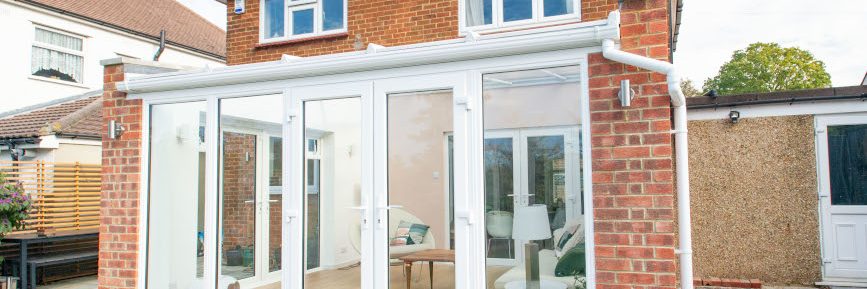When it comes to home improvements, extensions are one of the most popular routes taken. Many homes across the UK have already been extended with conservatories, and with a large quantity of those wanting to expand their homes further, it often prompts the question of “when does a conservatory become an extension?”.
When does a conservatory become an extension?
For an extension to be added to your home, you will first need to be granted planning permission. Conservatories are most often built under permitted development rights, meaning they are allowed to be constructed without achieving planning approval. Therefore, once the expansion of your conservatory requires approval from the local council, it will become an extension.
What is the difference between a conservatory and an extension?
The first, and potentially most noticeable difference between a conservatory and an extension is the appearance.
An extension is most typically designed and built to appear as part of the existing home, whereas a conservatory can look like an addition to the home.
Another difference is the materials used for their construction. You will notice that, whilst extensions use typical brick and mortar, the structure of conservatories is mostly made up of glass – approximately 75%! This includes the walls and roof.
What are the advantages of a conservatory?
- The energy efficiency of conservatories is ever-improving. The use of double or triple glazing can prevent you from reaching for your central heating. Instead, the temperature can be controlled – and these qualities can be enhanced with insulating films. In return, you could see your energy bills decreasing – a factor of home-living that is appreciated all the more today!
- Being made up mostly of glass, you are able to welcome the outdoors into your home. Allow the room to be flooded with natural light whilst you appreciate the views of your garden from the comfort of your home, all year round.
- Providing you with both warmth and light, the construction of a conservatory proves to be more cost-effective than a standard extension. Your lighting and heating can be switched off for longer each day!
What are the advantages of an extension?
- Whilst extensions display a smaller potion of the outdoors, they can provide enhanced security due to the robust materials used during construction.
- Extensions can provide you with additional space in a way that conservatories couldn’t, such as wider expanses or wrapping around the existing border of your home.
- Whilst lighting your extension can be more of a challenge, and one which includes additional costs, you would have the option of installing roof lanterns or bi-folds to allow additional natural light to fill your space.
How to keep your conservatory within permitted development rights
There will be no requirement to seek planning approval from your local council, so long as…
- Your conservatory does not extend beyond the sides of your home
- Your conservatory doesn’t reach heights above 4 meters
- Your conservatory occupies less than half the area pf your original home
- Your conservatory doesn’t encroach on the privacy of your neighbours
- Your conservatory should not make your living space creep any closer to public space, such as footpaths running near to your home
- If living in a semi-detached property, your conservatory doesn’t extend more than 3 meters
- If living in a detached property, your conservatory doesn’t extend more than 4 meters
Contact 1st Scenic
Enhance the beauty and practicality of your home with the addition of a conservatory. For a first-class service, choose us at 1st Scenic. We will be happy to provide additional information on what you could achieve with your conservatory. Get in touch by calling 01689 829 600 or emailing us at info@1stscenic.co.uk.











